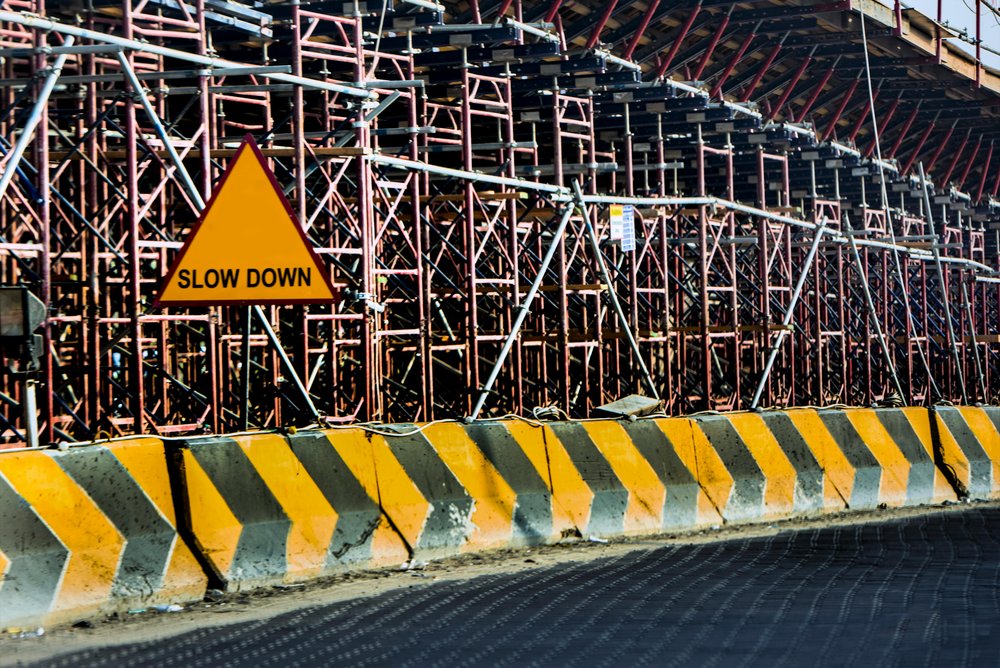How the US is Improving Worker Safety in Construction and Related Industries
Construction and several related industries are among the most hazardous, accounting for nearly 20% of all workplace fatalities in the US, according to OSHA. Ensuring worker safety is not only a regulatory requirement but a moral imperative and a key factor in operational efficiency.
Over the past decade, significant advancements have been made in enhancing worker protection, from the development of smart PPE and comprehensive safety management systems to the rise of innovative training programs and data-driven safety approaches. Let’s take a look at these advancements and explore the future plans.
Changes in the Past Decade
Advancements in Personal Protective Equipment (PPE)
Modern innovations in PPE include smart helmets equipped with augmented reality displays and sensors that monitor fatigue and environmental conditions. According to a 2022 report by the National Safety Council, the use of advanced PPE has reduced injury rates by 15% in construction sites.
High-visibility clothing made from reflective and LED-embedded materials has improved worker visibility in low-light conditions, reducing accidents by 10% since 2015.
Implementation of Safety Management Systems
The implementation of Safety Management Systems has been a game-changer for worker safety in construction. These systems provide a structured approach to managing safety, integrating processes such as hazard identification, risk assessment, and incident reporting.
According to OSHA, companies that have adopted SMS have seen a 20% reduction in workplace injuries. A 2020 study by the American Society of Safety Professionals found that firms using SMS experienced a 15% increase in compliance with safety regulations.
Safety Training Programs
The integration of virtual reality (VR) and augmented reality (AR) in training simulations has revolutionized the way workers are prepared for real-world scenarios. According to a 2021 report by the Center for Construction Research and Training, companies using VR training saw a 30% improvement in hazard recognition skills among employees.
A study published by the Journal of Safety Research indicated that AR-based training reduced the rate of safety incidents by 25%.
Regulatory Updates
Regulatory updates have played a large role in enhancing worker safety in construction. OSHA has introduced several key regulations aimed at reducing workplace hazards, including the 2017 update to the silica standard, which has decreased silica exposure by 50%, significantly lowering the risk of silicosis among workers.
In 2020, OSHA also revised its fall protection standards, leading to a 25% reduction in fall-related fatalities, according to their annual report. With accidental falls being the leading source of injury for Americans of nearly every age, according to one Bronx slip and fall attorney, this regulation promises to greatly improve worker safety.
Data-Driven Safety Approaches
Data-driven safety approaches have greatly improved worker safety by leveraging advanced analytics and IoT technologies to predict and prevent accidents. The use of wearable sensors and connected devices provides real-time monitoring of workers’ vital signs and environmental conditions, allowing for immediate intervention in hazardous situations.
According to a 2021 report by McKinsey & Company, companies implementing IoT-based safety solutions saw a 25% reduction in workplace injuries. Predictive analytics, which analyze historical safety data to forecast potential risks, have helped organizations reduce incident rates by 20%, as reported by the National Institute for Occupational Safety and Health (NIOSH).
Current Trends
Technology Integration
The integration of advanced technologies has led to substantial improvements in accident prevention and worker protection. Drones are now widely used for site inspections, reducing the need for workers to access dangerous areas and decreasing inspection time by 40%, according to a 2022 report by PwC.
Robotics and automation have also minimized manual handling of hazardous materials, cutting down injury rates by 30%. AI is employed to analyze safety data and predict potential hazards, with studies showing that AI-driven safety programs can reduce workplace accidents by up to 20%.
Focus on Mental Health
The focus on mental health has become increasingly prominent in ensuring overall worker safety. Recognizing that mental well-being is critical to physical safety, companies have implemented programs to address stress, anxiety, and depression among workers.
A 2021 survey by the American Psychological Association found that workplaces with mental health support programs reported a 25% decrease in absenteeism and a 20% reduction in workplace accidents.
The Construction Industry Alliance for Suicide Prevention reports that initiatives such as mental health first aid training and access to counseling services have significantly lowered the risk of mental health crises on job sites.
Emphasis on Safety Culture
Companies are increasingly recognizing that fostering a strong safety culture—where safety is a core value rather than a priority—leads to better safety outcomes. According to a 2020 report by the National Safety Council, organizations with a well-established safety culture experienced a 35% reduction in workplace injuries.
Leadership commitment plays a critical role, as studies have shown that visible and active involvement from top management correlates with a 30% increase in safety compliance. Engaging workers in safety discussions and decision-making processes has improved hazard reporting rates by 25% (OSHA).
Future Plans and Innovations
The future of worker safety in construction and related industries will be increasingly shaped by smart wearables and IoT devices. These technologies will provide real-time monitoring and feedback, significantly enhancing on-site safety.
For example, smart helmets equipped with sensors and GPS can alert workers to potential hazards and track their locations to ensure they are in safe zones. A study by MarketWatch forecasts that the global market for smart PPE will grow at a compound annual growth rate of 15.5% from 2021 to 2026.
IoT-enabled devices can continuously collect data on environmental conditions, equipment usage, and worker health metrics, allowing for predictive maintenance and proactive risk management.
Innovations in safety training are also on the horizon, with advanced methods such as immersive virtual reality and AI playing large roles. VR-based training programs can simulate high-risk scenarios, providing workers with hands-on experience without the associated dangers.
According to a report by the International Data Corporation (IDC), VR training is expected to reduce training-related costs by 30% and improve safety skill retention by 40%.
Conclusion
How can the construction and related industries continue to improve worker safety? By embracing advancements in PPE, implementing robust safety management systems, and leveraging data-driven approaches, these industries have already made significant strides.
The integration of cutting-edge technologies such as drones, robotics, and AI, along with a renewed focus on mental health and a strong safety culture, has led to notable reductions in workplace injuries and fatalities. Looking forward, the adoption of smart wearables, IoT devices, and immersive training methods will further enhance safety outcomes.
As the global market for smart PPE is projected to grow at a CAGR of 15.5% by 2026, it is clear that innovation and proactive strategies are essential for maintaining and advancing worker safety standards.






















